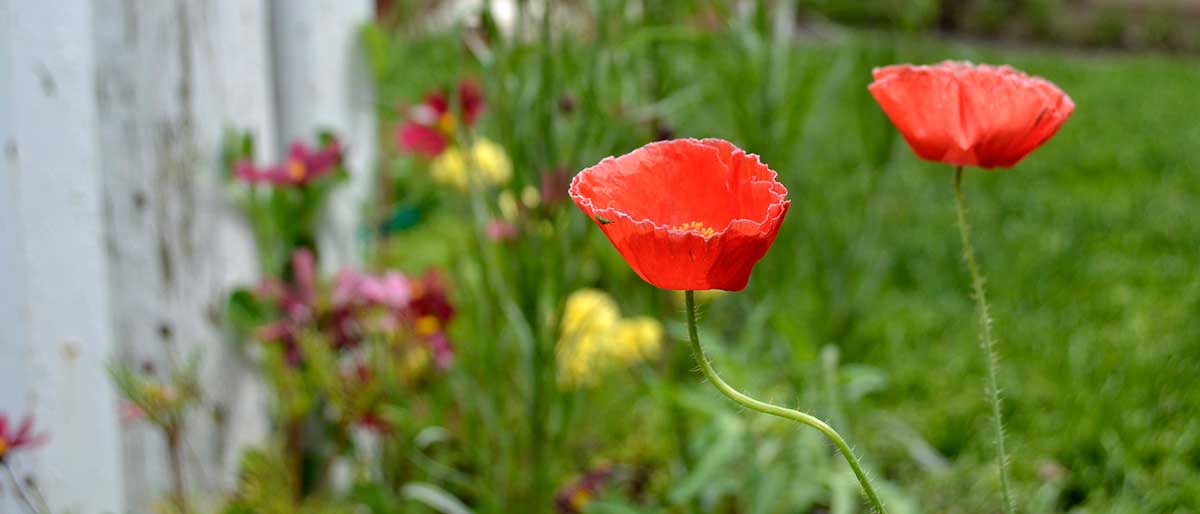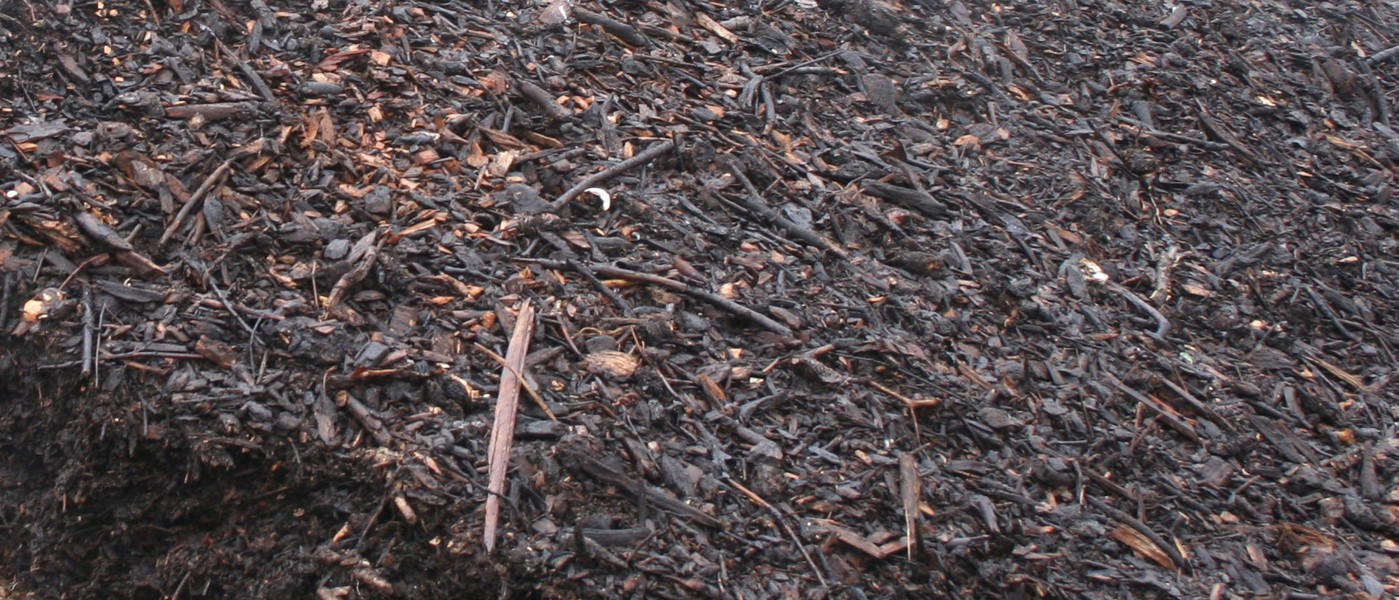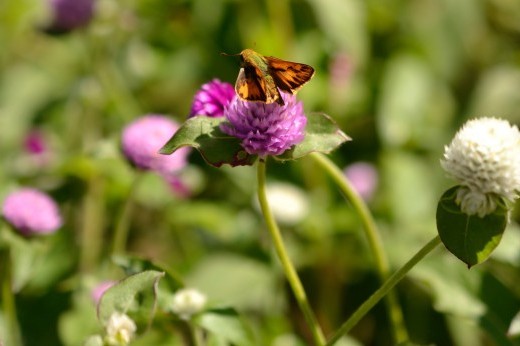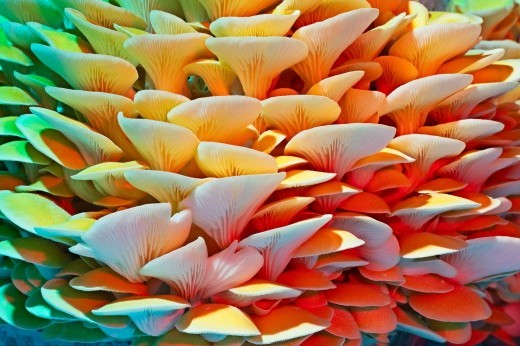Into the Garden is an ongoing series of interviews about plants, people, and everything in between.
Earlier this year, during a presentation given to the Education department at Brooklyn Botanic Garden, environmental scientist Sara Perl Egendorf explained that soil is not a fixed thing, but rather a body that is constantly in flux.
“I think of soil as the interface for all of Earth’s systems,” says Egendorf, a researcher with the New York Department of Sanitation and the NYC Compost Project hosted by Earth Matter and an assistant professor at Pace University. Soil, for Egendorf, is the ever-changing site where rocks, gases, water, and life collide.

Soil is also a site of injustice, and of repair. Their research has explored lead contamination in soil and strategies for reducing exposures, from approaches like washing crops to the construction of new soils with New York City’s Clean Soil Bank. As a founding member of the Legacy Lead coalition, they cocreated a comic with Paula Z. Segal and Emily Bell-Dinan called “The Legacy of Lead.” And as a researcher with the NYC Compost Project, they collaborate with growers to study the use of compost for growing crops.
We spoke with Egendorf about the legacy of lead and building new soils.
What is soil?
There are so many ways to define soil. How you define it depends on your perspective: who you are, your experiences, and how you interact with it, or don’t. I love that there isn’t always a simple answer. But I like “The Ecstatic Skin of the Earth,” from Bill Logan’s book title.
Another definition I love is that soil is this interface between the living and the nonliving worlds. These byproducts that come from living organisms are what make up the soil, along with rocks.
Hans Jenny, a soil scientist, showed in the 1940s that soil isn’t just this inert medium. It’s constantly changing based on “soil-forming factors”: the parent materials, or rocks, that are present; the organisms that are present; the climate, the topography, and time. And then a lot of folks are also talking about humans as a sixth soil-forming factor.
Soil is dynamic, which I think can help us get through our anthropocentric, myopic viewpoints—thinking a little deeper, a little broader, about what’s beyond us. This skin of the Earth is constantly shifting, and what we see is only a snapshot in time.
How do humans build, degrade, or transform soil?
I love that question. I grew up learning about humans as being problematic and destructive. And while that is certainly true, I think it’s important to distinguish that it’s not all humans. This globalized “we” is not very accurate, right? Not all people are creating harms in the same way, or experiencing harms in the same way. We need to recognize that, as a product of racial capitalism, there are power differentials in human societies.
I like to think of humans as a soil-forming agent, not just a soil-degrading agent. Humans are constantly making soils, intentionally and unintentionally. But I really like the intentional creation of soil, which is what our urban gardeners and farmers and growers do all the time: making compost, bringing in new materials and amendments.

People can also harm soils—by compaction, by stripping away the organic-rich layers, by overexploiting soils, and by leaving all sorts of contaminants in soils. One of the things I’ve looked at during my PhD, and in a lot of my research, is lead emissions into soils from gasoline and paint and other pathways.
In the Legacy Lead coalition comic, you walk readers through a deep history of lead, from the Big Bang to the present day. When did lead become a problem?
Lead and other heavy elements were created as a result of stars living and dying and colliding over billions of years.
Around 8,000 years ago, humans started mining some of these elements. Lead use peaked in ancient Rome, where it was used to build pipes, then declined through the Middle Ages, then skyrocketed during the Industrial Revolution, and its use began to exponentially increase with its introduction into paint and gasoline. And even though now it’s been banned in lots of products, lead is still used today in many other products, including solar batteries.
For at least 2,000 years, it’s been recorded that people can be poisoned from lead. It was known to be toxic when it was introduced into paint and gasoline. But it was nonetheless introduced, and a massive poisoning took place throughout the U.S. and the world, especially in cities. When leaded gasoline was burned in cars, for example, all of these emissions went to the atmosphere, and eventually they settled onto the ground, and these lead particles would cling to soil particles and basically stay there.
Even though the banning of leaded gasoline took effect in 1986, that legacy still lingers. And even though lead paint was banned in 1978, any buildings with old paint still contain lead, and if buildings with lead paint are demolished, then that dust enters the environment and lands in soil and stays there.
Why is lead contamination in soil an environmental justice issue?
Research done across numerous fields has identified the intersecting burdens of racialized residential segregation and disinvestment in low-income communities of color. These social forces created uneven geographies, where you have low-income communities and communities of color living in areas that are also next to toxic facilities and waste sites, or hazardous or contaminated areas.
Howard Mielke, one of my mentors, has mapped the city of New Orleans for lead contamination multiple times, and the pattern is what we would expect—that people of color are disproportionately exposed to soil contaminants. And that is often the case.
But while soils can store contaminants and contribute to burdens of exposure, soils can also promote justice.
On the microscale, healthy urban soils enable food justice and food sovereignty for growers and surrounding communities. On the mesoscale, healthy soils can promote environmental justice by limiting exposure to contaminants like lead citywide. And on the macroscale, soils can promote climate justice by storing carbon and by creating the green infrastructure needed for resiliency and adaptation.
These are all aspects of soils that I’m interested in studying.
How can we reduce harm from lead in soil?
Ultimately, we need to return that lead back to the rock record where it came from to keep folks safe.
There’s really no good, effective way to remove lead from soil on a human timescale. Lead is not a good candidate for phytoremediation, for example. And so other researchers and I have found that if lead is your main contaminant in the soil, if you build new layers on top, you can limit exposure.
This can be done by covering contaminated soil with permeable landscape fabric and bringing in at least six inches of new soil. The goal would be to alert future land users to what is below, and to maintain the cover over time.

In New York City, we have this amazing resource that no other city in the United States has. I work with the Mayor’s Office of Environmental Remediation and their Clean Soil Bank, where we’ve got all this sediment from development sites that has been shown to be thoroughly clean. They can only use materials that have undergone thorough testing for a suite of organic and inorganic contaminants.
Anyone can request free clean soil—they’ll deliver to community gardens in Brooklyn and Queens, or you can pick it up if you’re a home gardener or anybody else.
Does this approach of building layers on top of the soil work for other soil contaminants?
Not necessarily. For volatile organic carbons, or some other kinds of organic contaminants, like oil spills, that can volatilize and turn into a gas—that’s not a good solution. And for things that really mobilize and move through the groundwater, like arsenic, just covering it may not be the best solution.
But lead is highly immobile in soil, and in an urban setting, covering it is a really viable approach to limit exposure.
Your research also focuses on compost, a key ingredient in healthy soil. What are you working on with the NYC Compost Project?
The material gathered by the Clean Soil Bank is really just sediment, and it needs to be mixed with compost to make new soil. I’m interested in studying compost because that’s the main variable in soil, and composts are so different depending on your feedstocks and how you make them.
When the Department of Sanitation reached out to me asking if I wanted to study small-scale composts that are made by community gardeners, I said, absolutely.
I proposed that we use a Participatory Action Research framework, which centers the needs and interests of impacted communities in driving research. We got a Conservation Innovation Grant from the USDA, and then it went to the New York City Compost Project hosted by Earth Matter to run this project. We’re working with ten sites across the five boroughs, mostly community gardens, and I’m studying the use of their compost in ways that growers want, in ways that would be valuable to them.

For example, Domingo Morales of Compost Power is managing numerous compost sites across the five boroughs and is working at two Green City Force farms that we are collaborating with. When we met, he was like, I want to study the use of compost for weed suppression. So in one set of experiments, we’re looking at the use of a thin-sheet application of compost versus a thick quilt versus no compost, and comparing weed growth in each of those types of treatments.
Other folks are comparing their compost to DSNY, or Big Reuse compost, or other common composts that are available throughout the city. They are wondering how these composts compare for crop growth.
In addition to building new soil, how can gardeners and community members protect themselves and their neighbors from lead exposure?
We have a list of ten best practices, and research shows that these things really work.
A big one is washing your hands. Don’t bring in any soil from the urban environment into your home, and don’t put it into your body if you can. Wash your harvest, peel root vegetables that could have contaminated soil on their surface, and in general, try to limit the ingestion or inhalation of dust. Topping soil and pathways with mulch is another great way to keep that dust down, and watering is really crucial.
If possible, you should also grow in soil you know is safe. Don’t grow in that older soil that’s been there for decades. And don’t assume you can dig below. Before I got into this research, I was gardening in urban spaces, and I was digging things up and having a great time and realized years later, oh, that’s maybe not the best thing to do, especially without gloves.
To learn more, you can always get your soil tested.
What is it about soil that initially sparked your interest, and held your interest for so long?
To me, soil is the top layer of the rocks that make up our planet. Sometimes people go, why are you so interested in rocks? It’s like, that's the entire Earth! It’s all rocks, except this tiny little film of life and some atmosphere and water, which all came from rocks.
I took a geology class in college that changed everything for me. I didn’t know that we can learn about the Earth in deep scales of time and space, and quantify these changes that are always going on so far beyond humans.
I also came to this belief that science could be used to promote justice and well-being—that we could study the way the Earth works, and use that research to show that we can do things differently. That was the question I started to have 20 years ago.
So I became an educator, and I taught students about rocks in my home borough of the Bronx and in Seattle, and eventually went back to school for the sciences. All I knew is that I cared about Earth systems and human systems working better together. I wanted to conduct experiments that show not just what’s wrong—but that say, hey, this solution works, so let’s do more of it.




